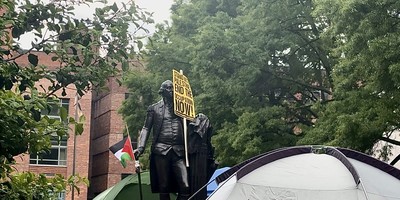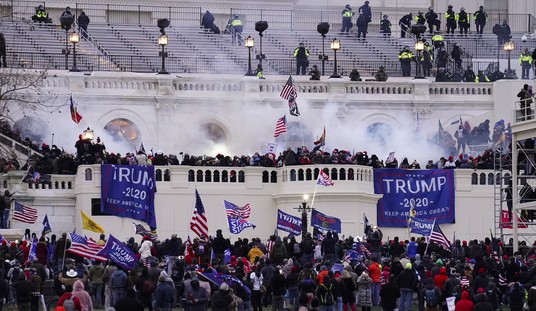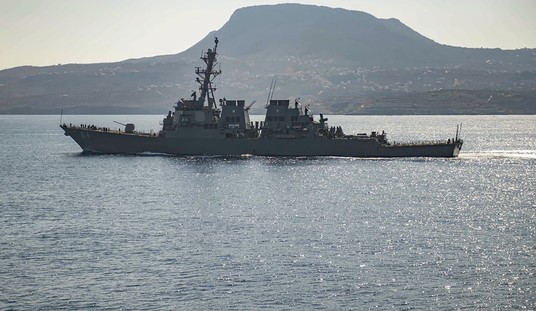GOMA, Congo -- The setting of this city is all contrast and drama -- nestled along a vast, placid lake but dominated by a volcano that steams by day and glows faint and red on a clear evening. A city living in the shadow of sudden violence.
Driving north from Goma, one passes through wide lava fields -- black, broken and sharp to the feet. About seven miles along the rutted road, the uniforms of the soldiers change, from the solid green of the FARDC (the Congolese military) to the camouflage of the CNDP (the rebel forces led by Laurent Nkunda). For civilians, the colors of the uniforms often matter little -- all the groups are capable of pillage and rape.
Less than a mile from the front, a left turn brings you into the Kibati I camp -- more than 6,000 men, women and children displaced by nearby fighting. The camps channel the problems of Congo like a storm drain after a flash food -- skin diseases, worms, diarrhea and respiratory ailments. A teenage girl wears a heavy coat against her malarial chills. An 8-year-old boy named Glory smiles for the camera though his hand is hot with fever.
When the various armies move, whole towns flee, causing spikes in sexual violence and acute malnutrition. And this individual suffering gathers into shocking statistics. Perhaps 4 million deaths related to war over the last decade. Or maybe it is 5 million. We know that the events are approaching a holocaust scale when the margin of error is measured in millions.
The fighting of late October and early November demonstrated every aspect of the challenge. The United Nations peacekeeping force (MONUC) had planned to use a cease-fire to insert itself between the combatants. The Congolese army violated the cease-fire almost immediately to attack the CNDP. In the ensuing fighting, Congolese forces were routed and fled down the road to Goma, killing and looting their countrymen as they ran through town and beyond. Some units of the Congolese army fired on the peacekeepers themselves. The United Nations military response was largely confused and ineffective, leading to the loss of a strategic town of Rutshuru that MONUC had pledged to defend. In the conquered village of Kiwanja, the triumphant rebels answered resistance with a door-to-door massacre of more than 50 people -- the killing done with machetes and clubs.
Recommended
Goma held. But the CNDP is now consolidating its gains, which could easily be expanded during future fighting. Nkunda, the CNDP's Tutsi rebel leader -- alternately described here as "charismatic," "populist," "ruthless" and "murderous" -- is on the ascendant. And he has little reason to negotiate a political settlement while he can dream of controlling the whole region, or even overthrowing the increasingly fragile Congolese government of President Joseph Kabila.
Security in eastern Congo is the prerequisite for political progress. Nkunda will continue to push until someone effectively pushes back. The Congolese army is incapable of defeating him. While MONUC is the reason Goma was not taken, it does not have the political will and the capabilities to contain Nkunda. It lacks rapid reaction forces and night-fighting capabilities.
This leaves one alternative -- a capable, hard-hitting European military force, supported by the United States, which would stabilize the situation, give MONUC some breathing room, and put a limit on Nkunda's ambitions. But Britain and Germany, to their shame, have opposed this kind of "bridging force." (It is particularly obscene that Germany, of all nations, should lose its outrage at mass violence.)
Such an intervention could help a variety of confidence-building efforts to move forward. Direct negotiations between Kabila and Rwandan President Paul Kagame might lessen Tutsi and Hutu tensions in eastern Congo and result in a more serious military effort against the FDLR -- a brutal rebel group founded by the Hutu authors of Rwanda's genocide. And Kabila could attempt to include a humbled Nkunda in future political arrangements -- if the young, insecure president is capable of such magnanimity.
These steps appear necessary -- and unlikely. Few seem to care sufficiently about Congolese suffering on a distant lake, beneath the cloud and fire of Mount Nyiragongo.
But the Congolese themselves provide hope. On the black lava fields -- where a rabbit would not burrow and nettles would not grow -- people are constructing fences of pumice and homes of reed and rock. It is human beings who choose to build even on foundations of disaster.
























Join the conversation as a VIP Member